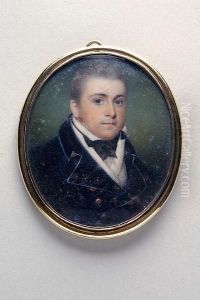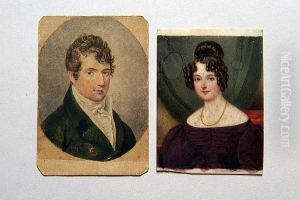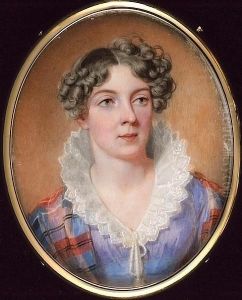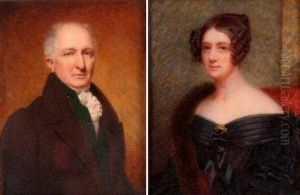Newton, Sir William John Paintings
Sir William John Newton was an English miniaturist renowned for his portrait miniatures. He was born in 1785 in Lichfield, Staffordshire, England. Newton's artistic talent became apparent at a young age, and he pursued his interest in art through diligent study and practice.
Initially, Newton was apprenticed to a heraldic painter in London, but his potential was soon recognized, and he was able to study at the Royal Academy Schools. There, he honed his skills and began to establish himself as a promising artist. By the early 19th century, Newton had developed a reputation as a skilled miniaturist, capturing the likeness and character of his sitters with precision and sensitivity.
During his career, Newton was particularly noted for his innovations in the art of miniature painting. He was credited with the invention of 'crystoleum', a process which involved painting on thin sheets of ivory backed by a layer of mother of pearl to give a luminous effect that enhanced the depth and richness of the portrait. This technique was well received and added to his popularity.
Newton exhibited his work regularly at the Royal Academy from 1808 until the 1830s and enjoyed the patronage of high society, including members of the British royal family. His success afforded him the opportunity to travel, and he spent some time in Italy, which influenced his work and may have contributed to his later preference for larger compositions.
Although best known for his miniatures, Newton also explored larger formats and even patented a method for transferring photographs onto ivory, anticipating the advent of more mechanical means of portraiture and reflecting the changing times. In recognition of his artistic achievements and contributions, William John Newton was knighted by Queen Victoria in 1837.
Sir William John Newton's legacy includes numerous exquisite miniatures that capture the essence of the Regency and early Victorian eras. His work is characterized by its fine detail, nuanced use of color, and the innovative techniques he employed. Newton died in 1869, leaving behind a body of work that continues to be celebrated for its elegance and artistry.







